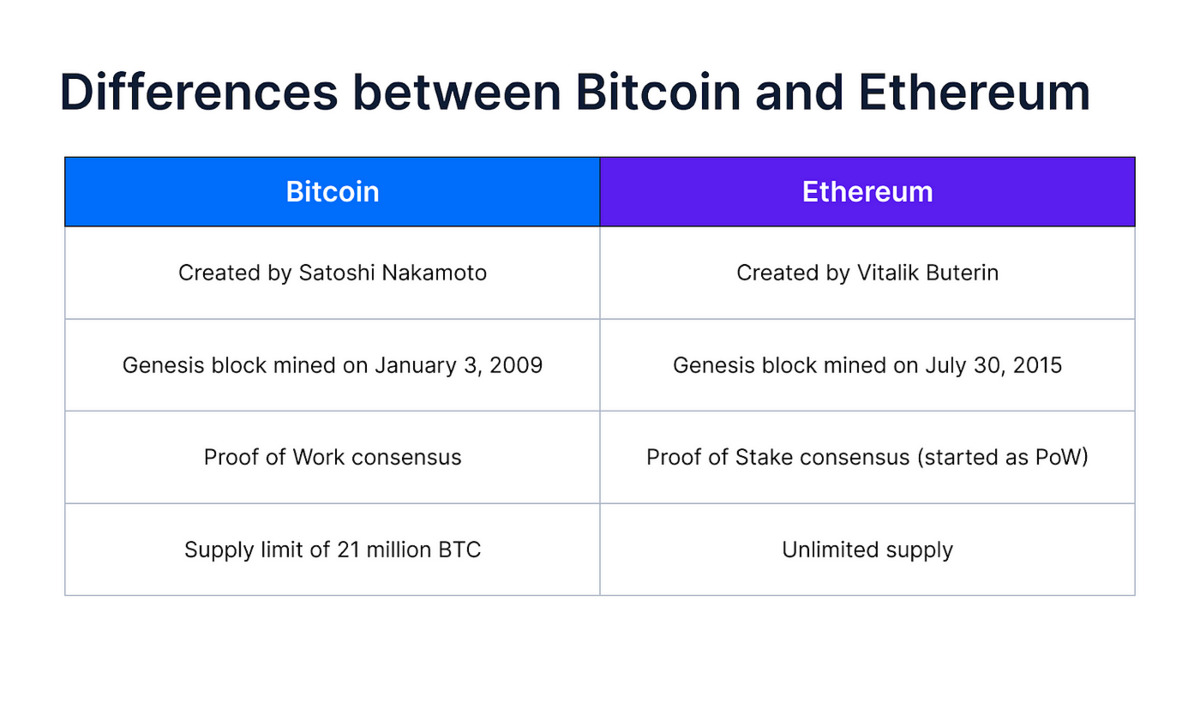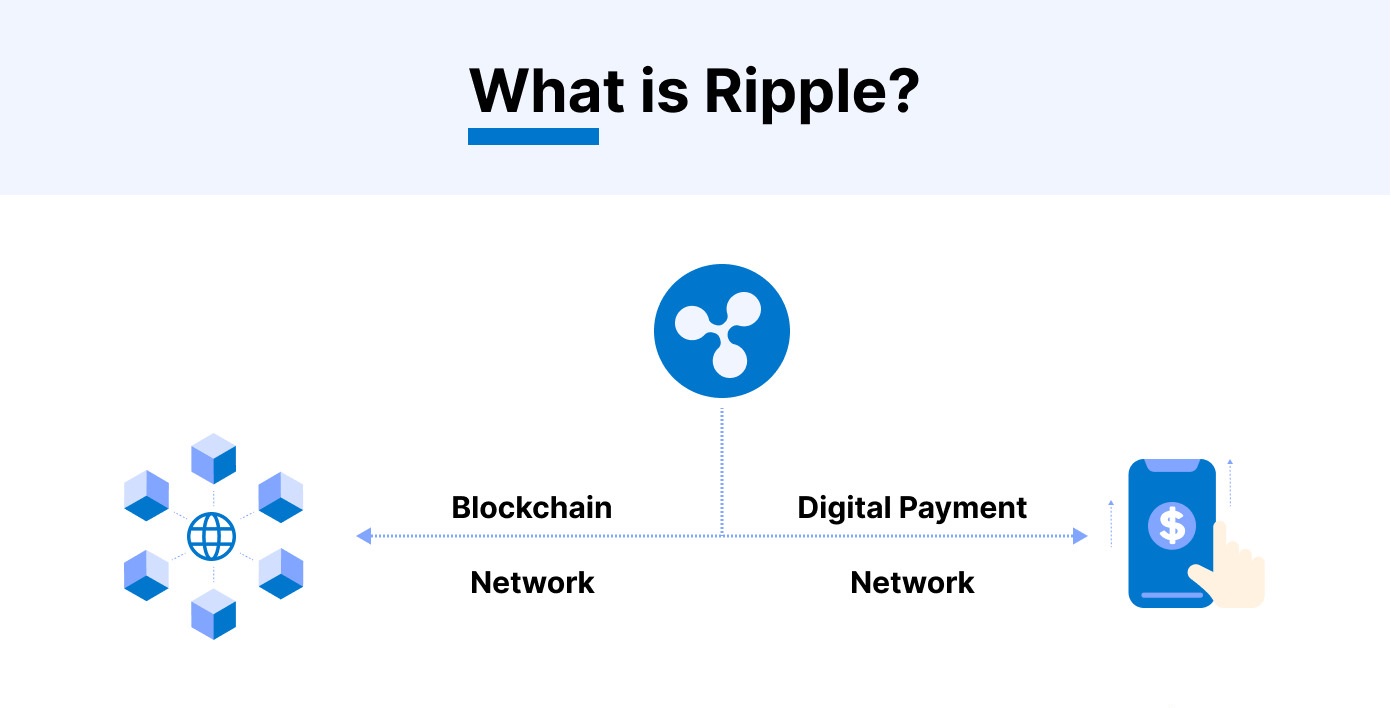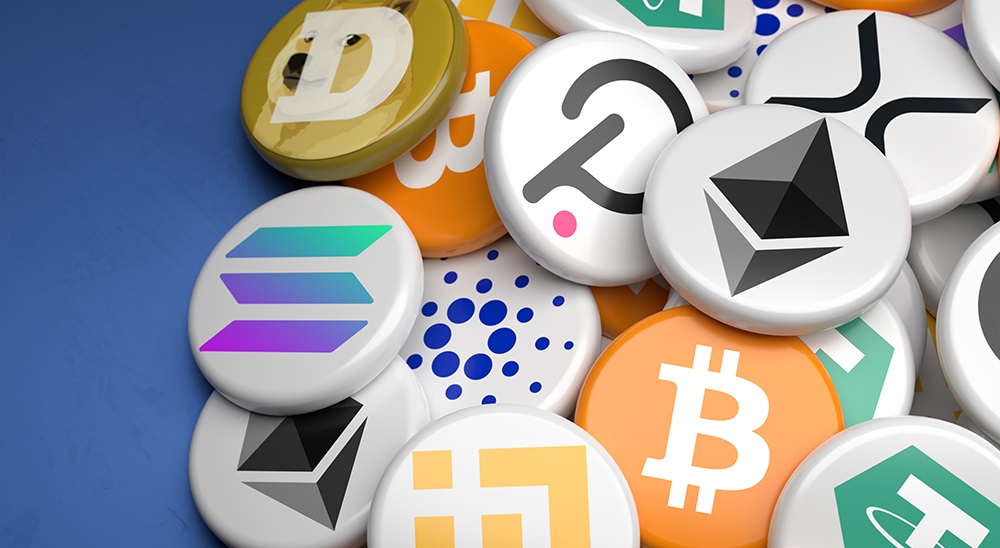Introduction
Welcome to the digital age, where advancements in technology have revolutionized the way we conduct financial transactions. One of the most significant developments in recent years has been the emergence of digital currency. With the rise of cryptocurrencies such as Bitcoin and Ethereum, digital currencies have gained widespread attention and have become an integral part of the global financial landscape.
But what exactly is digital currency? How does it work, and what are its implications for the future of finance? In this article, we will delve into the world of digital currency, exploring its definition, history, types, and the underlying technology that powers it.
Digital currency, also known as electronic money or electronic currency, can be defined as a form of currency that exists solely in electronic or digital form. Unlike traditional fiat currencies issued by central banks, digital currencies are decentralized, meaning they are not governed or regulated by any central authority. Instead, they rely on cryptographic techniques and blockchain technology to secure transactions and verify the transfer of value.
The concept of digital currency is not entirely new. It can be traced back to the early days of the internet, where attempts were made to create digital cash systems. However, it wasn’t until the launch of Bitcoin in 2009 by the pseudonymous Satoshi Nakamoto that digital currency gained mainstream recognition.
Today, there are various types of digital currencies in existence. The most well-known is undoubtedly Bitcoin, which remains the poster child of cryptocurrency. However, there are numerous altcoins (alternative cryptocurrencies) that have emerged, each with its own unique features and use cases.
To understand how digital currency works, it is crucial to familiarize ourselves with the underlying technology that powers it – blockchain. Blockchain is a distributed ledger technology that records and validates transactions across a network of computers called nodes. Each transaction is grouped into a block, which is then added to the chain of previous blocks, forming a chronological and immutable record of all transactions.
One of the key advantages of digital currency is its decentralization. Unlike traditional banking systems, where financial transactions are intermediated by banks or other financial institutions, digital currencies operate on a peer-to-peer basis. Transactions are validated and confirmed by a network of participants, eliminating the need for a middleman and reducing transaction costs.
Security is another crucial aspect of digital currency. Cryptographic techniques, such as encryption and digital signatures, are used to secure transactions and protect the integrity of the currency. Additionally, the decentralized nature of digital currencies makes them resistant to censorship and fraud, as the network of participants collectively maintains the integrity of the system.
In the following sections, we will explore specific types of digital currencies, delve deeper into how they work, and examine their benefits and challenges in more detail. By the end of this article, you will have a comprehensive understanding of digital currency and its potential to reshape the future of finance.
What is Digital Currency?
Digital currency, also known as electronic money, is a type of currency that only exists in electronic or digital form. Unlike traditional physical currencies, such as banknotes and coins, digital currencies are intangible and are typically stored and transacted electronically. They are not issued or controlled by any central authority, like a government or a central bank.
What sets digital currency apart from traditional fiat currencies is its decentralized nature. Instead of being governed by a central authority, digital currencies operate on a peer-to-peer network, where transactions are directly conducted between participants without the need for intermediaries.
The most well-known example of a digital currency is Bitcoin, which was created in 2009. Bitcoin, often referred to as a cryptocurrency, is built on a technology called blockchain, which ensures transparency, security, and immutability of transactions.
Digital currencies function through a combination of cryptographic techniques and advanced algorithms. These ensure that transactions are secure, private, and can be verified by the participants in the network.
One of the defining features of digital currencies is their finite supply. For example, in the case of Bitcoin, there will only ever be 21 million Bitcoins in existence. This scarcity not only adds value to the currency but also protects it from inflationary pressures that can devalue traditional fiat currencies.
While Bitcoin is the most prominent digital currency, there are numerous other cryptocurrencies in existence, each with its own unique features and purposes. Some of the notable digital currencies include Ethereum, Ripple, Litecoin, and Bitcoin Cash.
It is important to note that digital currencies should not be confused with digital payment mechanisms or digital representations of traditional currencies. While digital wallets and digital payment systems, like PayPal or Apple Pay, facilitate the transfer of traditional fiat currencies electronically, digital currencies are an independent form of decentralized currency.
Digital currencies have gained popularity due to their potential benefits, such as faster and cheaper cross-border transactions, increased financial inclusivity, and reduced reliance on traditional banking systems. However, they also come with their own set of challenges, including regulatory concerns, price volatility, and security risks.
As the adoption of digital currencies continues to grow worldwide, it is crucial to understand their characteristics, workings, and potential implications. In the following sections, we will explore the history of digital currency, the different types of digital currencies available, and the underlying technology that powers them.
History of Digital Currency
The concept of digital currency traces its roots back to the early days of the internet. As the internet became more prevalent and the need for online transactions grew, several attempts were made to create digital cash systems. One of the earliest pioneers in this field was David Chaum, who proposed the idea of a digital currency called “DigiCash” in the 1980s.
Chaum’s DigiCash aimed to create a secure and anonymous way of conducting electronic transactions. However, despite its innovative technology, DigiCash ultimately failed to gain widespread adoption due to various challenges, including regulatory hurdles and the lack of a well-established ecosystem.
Fast forward to 2009, a breakthrough in digital currency occurred with the launch of Bitcoin by a mysterious figure or group known as Satoshi Nakamoto. Bitcoin introduced a decentralized, peer-to-peer electronic cash system that relied on cryptography and blockchain technology to secure transactions and verify their authenticity.
Bitcoin quickly gained attention and sparked the development of numerous other digital currencies, known as cryptocurrencies. These cryptocurrencies sought to address some of the limitations of traditional currencies, such as inflation and the reliance on centralized authorities.
Over the years, digital currencies have evolved and diversified, with various cryptocurrencies offering different features and use cases. One of the significant milestones in the history of digital currency was the creation of Ethereum in 2015. Ethereum introduced the concept of smart contracts, allowing for the execution of programmable transactions without the need for intermediaries.
Since then, there has been a proliferation of cryptocurrencies, with thousands of different digital currencies now available in the market. Some of these currencies have specific purposes, such as privacy-focused cryptocurrencies like Monero and Zcash, while others aim to facilitate decentralized applications and platforms like Cardano and Polkadot.
Throughout their history, digital currencies have faced both praise and criticism. On one hand, proponents argue that digital currencies have the potential to revolutionize finance and empower individuals by providing them with greater control over their money. They highlight the advantages of reduced transaction costs, increased financial inclusivity, and the potential for economic growth and innovation.
On the other hand, critics express concerns about the volatility and speculative nature of digital currencies, as well as their potential for facilitating illicit activities. The lack of regulation and oversight in the cryptocurrency market has raised concerns regarding consumer protection, market manipulation, and potential risks to financial stability.
Despite these challenges, the history of digital currency reflects an ongoing shift toward embracing technologies that offer alternatives to traditional financial systems. As the technology continues to advance and regulatory frameworks evolve, digital currencies are likely to become increasingly integrated into our everyday lives.
In the next section, we will dive deeper into the different types of digital currencies that exist today, exploring their unique features and purposes.
Types of Digital Currency
The world of digital currency is expansive and diverse, with various types of digital currencies available in the market. While Bitcoin remains the most well-known and widely adopted digital currency, there are numerous other cryptocurrencies, altcoins, and digital tokens that serve different functions and cater to specific needs. Let’s explore some of the most prominent types of digital currencies:
1. Cryptocurrencies: Cryptocurrencies are digital currencies that use cryptography for security and operate on decentralized networks, such as blockchain. Bitcoin, created by Satoshi Nakamoto, is the first and most famous cryptocurrency. Ethereum, Ripple, Litecoin, and Bitcoin Cash are other notable cryptocurrencies that have gained significant attention and adoption.
2. Stablecoins: Stablecoins are a type of digital currency designed to minimize the inherent volatility often associated with cryptocurrencies. These currencies are usually pegged to a tangible asset or a fiat currency, such as the US Dollar or the Euro. Stablecoins provide stability and can be used for everyday transactions and as a store of value. Examples include Tether, USD Coin, and Dai.
3. Utility Tokens: Utility tokens are digital currencies that are typically issued by projects or organizations to be used within their ecosystems. These tokens have a specific utility or function, such as granting access to services, incentivizing users, or representing ownership rights. Ethereum’s native currency, Ether (ETH), is an example of a utility token.
4. Security Tokens: Security tokens represent ownership in an underlying asset, such as real estate, stocks, or commodities. They are regulated digital securities that offer investors ownership rights, dividends, or profit-sharing in a project or company. Security tokens aim to provide transparency and regulatory compliance in the digital asset space.
5. Central Bank Digital Currencies (CBDCs): Central Bank Digital Currencies are digital representations of a country’s fiat currency issued and regulated by the central bank. Unlike cryptocurrencies, CBDCs are centralized and have the backing of a government, providing stability and confidence in the digital form of national currency. Several countries, including China and Sweden, are exploring the development of CBDCs.
6. Privacy Coins: Privacy coins focus on enhancing the privacy and anonymity of transactions. These cryptocurrencies employ advanced encryption techniques to obfuscate transaction details and protect the identities of users. Monero, Zcash, and Dash are popular privacy-oriented digital currencies.
These are just a few examples of the diverse range of digital currencies available. Each type of digital currency serves a different purpose, spanning from facilitating decentralized peer-to-peer transactions to enabling smart contracts and beyond.
It is important to note that the cryptocurrency market is highly dynamic, with new types of digital currencies continually emerging. The evolution and maturation of blockchain technology have enabled the development of innovative digital currencies, further expanding the possibilities for digital transactions, investment opportunities, and financial inclusion.
In the upcoming sections, we will explore in more detail how digital currencies work, including the fundamental concepts of public and private keys and the underlying technology of blockchain.
How Does Digital Currency Work?
Understanding how digital currency works requires familiarizing ourselves with key concepts and technologies that underpin its functioning. At the core, digital currency relies on advanced cryptographic techniques, decentralized networks, and a transparent ledger system to facilitate secure and efficient transactions. Let’s explore the fundamentals:
1. Public and Private Keys: Digital currency transactions are secured using a pair of cryptographic keys: a public key and a private key. The public key is openly shared and serves as an address to receive funds, while the private key is kept secret and allows the owner to access and sign transactions. The combination of these keys ensures secure and verifiable ownership and transfer of digital currency.
2. Blockchain Technology: Digital currencies, particularly cryptocurrencies, rely on blockchain technology. A blockchain is a decentralized and distributed ledger that records all transactions across a network of computers, known as nodes. Each transaction is grouped into a block, which is then added to the chain of previous blocks, creating an immutable and transparent record of all transactions. The blockchain ensures the integrity, transparency, and security of digital currency transactions without the need for intermediaries.
3. Decentralization: Unlike traditional financial systems that are centralized and controlled by a central authority, digital currencies operate on decentralized networks. Decentralization means that no single entity has complete control over the currency, making it resistant to censorship, manipulation, and single points of failure. Transactions are verified and confirmed by a network of participants, known as miners or validators, who ensure the authenticity and security of the network.
4. Security and Cryptography: Digital currencies employ cryptographic techniques to ensure the security and confidentiality of transactions. Encryption algorithms protect sensitive data, such as transaction details and private keys, from unauthorized access. Digital signatures verify the authenticity and integrity of transactions, allowing participants to willingly and securely exchange value without the need for trust in a central authority.
5. Validation and Consensus: In a decentralized network, consensus mechanisms are used to validate and agree on the state of the blockchain. Different cryptocurrencies employ various consensus algorithms, such as Proof-of-Work (PoW) or Proof-of-Stake (PoS), which ensure that all participants reach a common agreement on the order and validity of transactions. By achieving consensus, digital currencies eliminate the need for trusted intermediaries and enable direct peer-to-peer transactions.
When a digital currency transaction takes place, it is broadcasted to the network, and miners or validators compete to solve complex mathematical puzzles or stake their own digital currency to validate the block of transactions. Once validated, the block is added to the blockchain, and the transaction becomes a permanent part of the ledger.
By leveraging cryptography, decentralization, and transparent ledger systems, digital currencies offer secure, efficient, and borderless transactions. They reduce dependency on traditional financial intermediaries, enable financial inclusion for the unbanked, and provide opportunities for innovation in areas such as programmable money, micropayments, and decentralized applications.
In the following sections, we will explore specific examples of digital currencies, their benefits, and the challenges they face in the evolving landscape of global finance.
Public and Private Keys
Public and private keys play a vital role in the security and functionality of digital currency transactions. These cryptographic keys are used to verify the authenticity of transactions, ensure secure ownership, and enable the transfer of digital assets. Let’s dive deeper into the concepts of public and private keys:
Public Key: A public key is a cryptographic key that is freely shared and acts as an address to receive funds. It serves as a unique identifier associated with a digital wallet or user. Public keys are derived from complex mathematical algorithms and are typically represented as a long string of characters.
When someone wants to send digital currency to a specific recipient, they use the recipient’s public key to specify the destination of the funds. Public keys are designed to be shared openly and can be freely distributed across the network without compromising security.
Private Key: A private key is a confidential cryptographic key that must be kept secret by the owner. It is used to access and authorize transactions associated with the corresponding public key. Just as the name implies, this key should never be shared with anyone else to prevent unauthorized access to the digital assets.
The private key is generated alongside the public key and is mathematically linked to it. Through a complex algorithm, the private key uniquely corresponds to its associated public key, ensuring a secure and tamper-proof connection. It is crucial to securely store the private key, as losing or compromising it can result in irreversible loss of funds.
When making a transaction, the sender uses their private key to digitally sign the transaction, providing proof of authenticity and authorization. The public key of the recipient is used to verify the signature and ensure that the transaction originated from the rightful owner of the private key.
The combination of a public key and private key creates a powerful cryptographic system. Although the public key can be openly shared, it is computationally infeasible to derive the private key from the public key alone, ensuring the security of the digital assets associated with the key pair.
Through the use of public and private keys, digital currency transactions achieve a high level of security and enable participants to securely transfer assets without the need for trust in a central authority. Together with other cryptographic techniques and decentralized networks, public and private keys form the foundation of secure and efficient digital currency transactions.
In the next sections, we will explore the underlying technology of blockchain, decentralization, and the security measures employed in digital currencies.
Blockchain Technology
Blockchain technology is a fundamental building block of digital currencies, revolutionizing the way transactions are recorded, verified, and secured. It is a decentralized and transparent ledger system that facilitates peer-to-peer transactions across a network of computers, known as nodes. Let’s explore the key aspects of blockchain technology:
Decentralization: At the heart of blockchain technology is the concept of decentralization. Unlike traditional financial systems that rely on a central authority, blockchain operates on a distributed network, where each participant (node) has a copy of the entire ledger. This decentralization eliminates the need for intermediaries, such as banks, and promotes transparency, security, and resilience.
Immutable and Transparent Ledger: The blockchain ledger is formed by a series of interconnected blocks, each containing a list of verified transactions. Once a block is added to the blockchain, it becomes permanent and cannot be altered without the consensus of the network. This immutability ensures the integrity of the transaction history and prevents fraud or tampering.
Furthermore, blockchain technology facilitates transparency as anyone with access to the network can inspect and verify the transaction history. This transparency enhances trust and accountability, as transactions are open for scrutiny by all participating nodes.
Consensus Mechanisms: To validate and confirm transactions, blockchain networks employ consensus mechanisms. These mechanisms ensure that all participants agree on the order and validity of transactions, even in the absence of a central authority. Different consensus algorithms are used, such as Proof-of-Work (PoW), Proof-of-Stake (PoS), and Delegated Proof-of-Stake (DPoS), each with its own approach to achieving agreement and trust within the network.
Security and Encryption: Blockchain technology employs advanced cryptographic techniques to secure transactions. Each block in the blockchain is linked to the previous block through a cryptographic hash function, creating an unbreakable chain of blocks. Additionally, digital signatures are used to verify the authenticity and integrity of transactions, preventing unauthorized alterations or forgeries.
Smart Contracts: Smart contracts are self-executing contracts with the terms of the agreement directly written into lines of code. They are stored and executed on the blockchain, eliminating the need for intermediaries and enhancing automation and efficiency. Smart contracts enable programmable transactions, allowing for complex conditions, automatic settlements, and the creation of decentralized applications (DApps).
Blockchain technology, with its decentralization, transparency, and security, has potential applications beyond digital currencies. Industries such as supply chain management, healthcare, voting systems, and asset ownership record-keeping can benefit from the decentralized and tamper-proof nature of blockchain.
It is important to note that there are different types of blockchains, including public blockchains that are open for anyone to participate in, and private or permissioned blockchains that restrict access to a limited set of participants. Each type has its own use cases and considerations.
In the upcoming sections, we will explore the decentralization of digital currencies, the security measures employed to protect them, and various examples of digital currencies that utilize blockchain technology.
Decentralization
Decentralization lies at the core of digital currencies, transforming the traditional financial landscape by eliminating the need for a central authority. It empowers individuals by providing direct control over their financial transactions and assets. Let’s delve into the concept of decentralization and its significance in the realm of digital currencies:
Elimination of Intermediaries: In traditional financial systems, transactions typically require intermediaries, such as banks or payment processors, to facilitate and verify transactions. These intermediaries not only add complexity but also introduce costs, delays, and potential points of failure. In a decentralized system, digital currencies enable transactions to occur directly between parties, eliminating the need for intermediaries and promoting efficiency and cost-effectiveness.
Peer-to-Peer Transactions: Decentralization allows for direct peer-to-peer transactions, where parties can transact without relying on a third-party authority or intermediary. This peer-to-peer nature enhances the speed and efficiency of transactions, as they can be conducted directly between the sender and receiver without any intermediation or delays associated with centralized systems.
Security and Resilience: Decentralization enhances the security and resilience of digital currencies. In centralized systems, a single point of failure or vulnerability, such as a central authority or server, can compromise the entire system. In contrast, decentralized networks distribute the transactional data across numerous computers (nodes), making it extremely challenging for malicious actors to manipulate the network. This distributed and redundant nature of decentralized networks ensures the resilience and stability of digital currencies in the face of potential attacks or failures.
Censorship Resistance: Decentralization in digital currencies reduces the potential for censorship. In centralized financial systems, transactions can be subject to censorship or control by central authorities, governments, or financial institutions. With decentralization, transactions are verified by a network of participants who collectively maintain the integrity of the system. This makes digital currencies resistant to censorship and allows for greater financial freedom and inclusion.
Financial Inclusion: Decentralization in digital currencies has the potential to promote financial inclusion, particularly for unbanked and underbanked populations. In many parts of the world, accessing traditional financial services can be challenging or impractical. Digital currencies provide an alternative by allowing individuals to participate in the global financial system, conduct transactions, and store value without the need for a bank account or approval from centralized authorities.
Democratic Governance: Some blockchain-based digital currencies incorporate governance models that give stakeholders a voice in decision-making. Through consensus mechanisms and governance protocols, participants have the opportunity to influence the direction and development of the digital currency. This democratic approach enables a community-driven ecosystem, promoting fairness and inclusivity.
While decentralization offers numerous benefits, it does come with certain challenges. Scalability, energy consumption, regulatory compliance, and user experience are areas where digital currencies must strive to strike the right balance between decentralization and practicality. Nonetheless, decentralization remains an essential and transformative aspect of digital currencies, paving the way for a more inclusive, efficient, and secure financial landscape.
In the upcoming sections, we will explore the security measures and cryptography employed in digital currencies, as well as specific examples of digital currencies that have embraced decentralization as a core principle.
Security and Cryptography
Security is a paramount concern in the world of digital currencies, where transactions and digital assets need to be protected against unauthorized access and tampering. Cryptography plays a vital role in ensuring the security and integrity of digital currency transactions. Let’s explore the key concepts of security and cryptography:
Encryption: Encryption is a foundational component of digital currency security. It involves the use of complex mathematical algorithms to convert sensitive data into an unreadable format, known as ciphertext. Encryption ensures that only authorized parties with the correct decryption key can access and decode the information. In the context of digital currencies, encryption is used to secure wallets, private keys, and transaction details, shielding them from unauthorized access.
Digital Signatures: Digital signatures are cryptographic mechanisms used to verify the authenticity and integrity of digital currency transactions. They provide a way for participants to prove that a transaction has been authorized by the rightful owner of the associated private key. Digital signatures involve the creation of a unique digital fingerprint, or hash, of the transaction data, which is then encrypted using the private key. The encrypted signature is included with the transaction and can be verified using the sender’s public key, ensuring the integrity of the transaction and preventing tampering.
Hash Functions: Hash functions are mathematical algorithms that convert any input data into a fixed-size string of characters known as a hash. In the context of digital currencies, hash functions are used to create unique identifiers for transactions, blocks, or digital assets stored on the blockchain. Hash functions provide an additional layer of security by ensuring that even a small change in the input data results in a completely different hash output, making it difficult for tampering or fraud to go undetected.
Key Management: Proper key management is crucial for the security of digital currency transactions. This involves securely generating and storing private keys, as well as correctly associating them with respective public keys or wallet addresses. Participants must carefully protect their private keys and use secure wallets or hardware devices to store them. Additionally, best practices such as regularly updating and rotating keys, using multi-factor authentication, and employing robust access controls must be followed to mitigate the risk of unauthorized access or theft.
Integrity and Consensus: Blockchain technology, which underlies many digital currencies, employs consensus mechanisms that ensure the integrity and validity of transactions. Consensus mechanisms, such as Proof-of-Work (PoW) or Proof-of-Stake (PoS), involve computational or stake-based algorithms that require participants to invest resources or tokens to validate and add new blocks to the blockchain. By achieving consensus, digital currencies maintain the security and integrity of the distributed ledger, making it extremely difficult for malicious actors to alter the transaction history or compromise the system.
By leveraging the power of encryption, digital signatures, hash functions, and consensus mechanisms, digital currencies ensure robust security measures to protect transactions, identities, and digital assets. These cryptographic techniques work in tandem with decentralized networks, further fortifying the security of digital currencies and providing users with confidence in the integrity of their financial transactions.
In the upcoming sections, we will explore specific examples of digital currencies and their practical applications, highlighting the benefits and challenges they present in the ever-evolving landscape of finance and technology.
Examples of Digital Currency
The world of digital currency is diverse and ever-expanding, with a multitude of different cryptocurrencies and digital tokens available. Here are a few examples of notable digital currencies and their applications:
Bitcoin (BTC): Bitcoin is the first and most well-known digital currency, created by the pseudonymous Satoshi Nakamoto in 2009. It operates on a decentralized network powered by blockchain technology. Bitcoin is often referred to as “digital gold” and is widely recognized as a store of value and a medium of exchange. It has gained significant adoption and acceptance worldwide, attracting investors as well as facilitating peer-to-peer transactions.
Ethereum (ETH): Ethereum is a decentralized, open-source blockchain platform that enables the creation of smart contracts and decentralized applications (DApps). It introduced the concept of programmable money, allowing developers to build and deploy their applications on the Ethereum blockchain. The native cryptocurrency of the Ethereum platform is Ether (ETH), which is used to fuel transactions and power the execution of smart contracts.
Ripple (XRP): Ripple is a digital currency and an open payment protocol that aims to facilitate fast and low-cost international money transfers. Unlike other cryptocurrencies, Ripple does not rely on blockchain technology but utilizes a network of trusted validators to verify and validate transactions. It has gained popularity among financial institutions due to its potential for efficient cross-border transactions.
Litecoin (LTC): Created by Charlie Lee, a former Google engineer, Litecoin is often seen as a “silver” alternative to Bitcoin’s “gold.” It is a peer-to-peer digital currency that offers faster transaction confirmation times and a different hashing algorithm compared to Bitcoin. Litecoin has gained a loyal following and is often used for everyday transactions due to its lower transaction fees and faster block generation times.
Stellar (XLM): Stellar is a blockchain-based platform designed to facilitate fast and low-cost cross-border payments and asset transfers. Its native cryptocurrency, Lumens (XLM), serves as a bridge currency, facilitating the conversion of different currencies. Stellar focuses on financial inclusion, aiming to provide affordable access to financial services for the unbanked and underbanked populations.
Cardano (ADA): Cardano is a blockchain platform that aims to provide a secure and scalable infrastructure for building decentralized applications and smart contracts. It places a strong emphasis on security and regulatory compliance, utilizing a proof-of-stake consensus algorithm to achieve consensus and validate transactions. The cryptocurrency associated with Cardano is called Ada (ADA).
These are just a few examples of digital currencies, each with its own unique features, applications, and goals. The digital currency ecosystem is characterized by constant innovation, with new cryptocurrencies and tokens being introduced regularly, each addressing specific use cases or solving specific challenges. It’s important to stay informed and conduct thorough research before engaging with any particular digital currency.
In the next sections, we will explore the benefits and challenges of digital currency adoption, providing a comprehensive view of the evolving landscape of finance.
Benefits of Digital Currency
Digital currency has gained significant attention and adoption in recent years, offering various benefits that have the potential to transform the global financial landscape. Here are some of the key advantages of digital currency:
1. Financial Inclusion: Digital currency has the potential to provide financial access to the unbanked and underbanked populations around the world. With a digital wallet and internet connection, individuals can participate in the global economy, conduct transactions, and store value without the need for a traditional bank account. This can help foster economic empowerment and reduce financial inequalities.
2. Cost Savings: Digital currency transactions can be significantly more cost-effective compared to traditional financial systems. By eliminating intermediaries such as banks or payment processors, transaction fees can be reduced or even eliminated, making digital currency an attractive option for cross-border transfers and remittances.
3. Fast and Efficient Transactions: Digital currency enables near-instantaneous transactions, especially when compared to traditional banking systems, which may involve delays for clearing and settlement. Peer-to-peer transactions conducted using digital currency can occur directly between parties, reducing processing time and increasing efficiency.
4. Enhanced Security: Digital currencies leverage cryptographic techniques and blockchain technology, making them highly secure and resistant to fraud and counterfeiting. Transactions are validated and verified through decentralized consensus, and the use of encryption ensures the privacy and integrity of transaction data. Additionally, the transparency of blockchain technology allows for enhanced oversight and auditability.
5. Reduction in Intermediaries: Digital currencies operate on decentralized networks, reducing the need for intermediaries such as banks or payment processors. This not only simplifies the transaction process but also reduces the potential for errors, delays, and costs associated with intermediaries. It also empowers individuals with direct control over their funds and eliminates the risk of frozen accounts or limitations imposed by financial institutions.
6. Programmable Money: Certain digital currencies, like Ethereum, enable the execution of smart contracts, which are self-executing agreements with the terms of the contract written into code. Smart contracts allow for automation, eliminating the need for intermediaries to enforce the terms of the agreement. This programmability opens up new possibilities for various industries, including supply chain management, decentralized finance (DeFi), and decentralized applications (DApps).
7. Global Accessibility: Digital currency transcends geographical boundaries and can be accessed and used by anyone with an internet connection. This global accessibility opens up markets and business opportunities beyond traditional borders, facilitating global commerce and financial integration.
8. Potential for Innovation: The digital currency ecosystem fosters innovation by providing a platform for the development of new financial technologies and business models. The advent of blockchain technology and the creation of digital currencies have given rise to decentralized finance, tokenization of assets, and novel approaches to fundraising through Initial Coin Offerings (ICOs) or Security Token Offerings (STOs).
As digital currency continues to evolve and gain acceptance, its benefits are increasingly recognized across various industries and sectors. However, it is important to note that challenges and risks, such as regulatory uncertainties, price volatility, and security concerns, also exist. Nevertheless, the potential for digital currency to reshape finance and promote inclusive, efficient, and secure transactions is evident.
In the following sections, we will explore the challenges and considerations associated with digital currency adoption, providing a comprehensive view of the evolving digital currency landscape.
Challenges of Digital Currency
While digital currency offers numerous benefits and possibilities, its widespread adoption faces various challenges and considerations. Here are some of the key challenges associated with digital currency:
1. Regulatory Uncertainty: The regulatory landscape surrounding digital currency is still evolving, with different jurisdictions taking different approaches. Lack of clear regulations and varying interpretations by governments and regulatory bodies can create uncertainty for users, businesses, and investors. Regulatory frameworks need to find the right balance between consumer protection, financial stability, and fostering innovation.
2. Price Volatility: Digital currencies are known for their price volatility, often experiencing significant fluctuations within short periods. While volatility can present opportunities for traders and investors, it can also deter mainstream adoption since stability is a crucial factor for a reliable medium of exchange and store of value. Stablecoins have emerged as an attempt to address this challenge by pegging the value of the digital currency to a stable asset or currency.
3. Scalability: As digital currency adoption grows, scalability becomes a crucial challenge. Traditional payment systems can process thousands of transactions per second, whereas many blockchain-based digital currencies have limited scalability. Scaling solutions like layer 2 protocols, sharding, or off-chain transactions are being explored to address this challenge and enable higher transaction throughput.
4. Security Risks: While digital currencies provide robust security measures based on cryptography and blockchain technology, they are not immune to security risks. Cybersecurity threats, hacking attempts, and vulnerabilities in smart contracts or wallet software are some of the risks that need to be addressed to ensure the safe use and storage of digital assets.
5. User Experience: Digital currency transactions should be user-friendly and intuitive for widespread adoption. However, the user experience of digital wallets, transaction processes, and interactions with blockchain technology can still be complex and challenging for non-technical users. Improving the user experience and making digital currency more accessible to individuals with varying levels of technical expertise are ongoing priorities.
6. Energy Consumption: Some digital currencies, particularly those that rely on mining through Proof-of-Work consensus algorithms, have drawn attention for their significant energy consumption. As the demand for digital currency grows, concerns about the environmental impact and carbon footprint associated with energy-intensive mining operations must be addressed through more sustainable consensus mechanisms or increased use of renewable energy sources.
7. Privacy and Regulatory Compliance: While digital currencies offer enhanced privacy for transactions, certain implementations have raised concerns about their potential misuse for illicit activities, money laundering, or financing terrorism. Striking a balance between privacy and the need for regulatory compliance, Know Your Customer (KYC) requirements, and Anti-Money Laundering (AML) regulations is an ongoing challenge for the industry.
8. Interoperability: The digital currency ecosystem currently consists of numerous blockchain networks and digital currencies that do not always seamlessly communicate with each other. Promoting interoperability and standardization across different networks and platforms is essential for the efficient transfer of value and the realization of the full potential of digital currency.
Addressing these challenges will require collaboration between industry participants, governments, and regulatory bodies to develop appropriate frameworks, enhance user experience, promote security best practices, and navigate the complex landscape of digital currency adoption.
In the following sections, we will further explore the evolving landscape of digital currency adoption, examining the impact and potential future developments of this transformative technology.
Conclusion
Digital currency has emerged as a transformative force in the global financial landscape, offering a range of benefits and possibilities. With its decentralized nature, enhanced security, and potential for financial inclusion, digital currency has the power to revolutionize the way we transact and store value.
Bitcoin, Ethereum, Litecoin, Ripple, and other digital currencies have gained significant attention and adoption, paving the way for innovative financial technologies and decentralized applications. The underlying blockchain technology provides transparency, security, and tamper-proof transactions, enabling trust in a trustless environment.
While there are challenges to overcome, such as regulatory uncertainties, price volatility, scalability, and user experience, the potential for digital currency to reshape finance and promote financial inclusivity is undeniable. As the regulatory landscape becomes clearer, technology advancements address scalability issues, and user-friendly solutions improve, digital currency adoption is expected to accelerate further.
The future of digital currency holds promises of increased financial accessibility, reduced friction in cross-border transactions, and the democratization of financial systems. It has the potential to empower individuals, disrupt traditional financial intermediaries, and foster innovation in various industries beyond finance.
As the digital currency landscape continues to evolve dynamically, it is important for individuals, businesses, and regulators to stay informed, understand the benefits and challenges, and navigate the opportunities and risks associated with this emerging technology.
Digital currency is not merely a technological advancement; it represents a paradigm shift in how value is perceived and exchanged. By embracing the potential of digital currency and fostering a collaborative and forward-thinking environment, we can shape a future where financial systems are more inclusive, efficient, and secure for all.

























